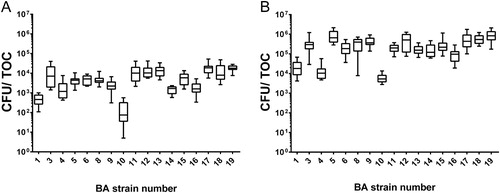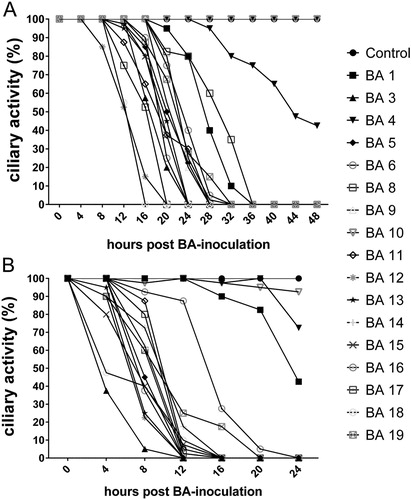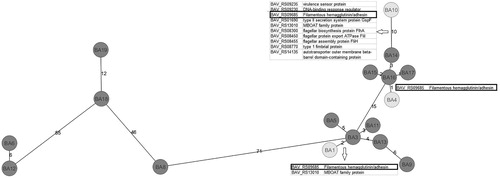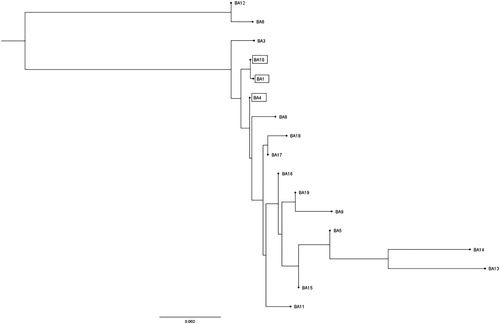Figures & data
Table 1. B. avium isolates used in this study.
Figure 1. Adherence assay in TOCs. Number of adhered bacteria following inoculation with 105 CFU (A) and 107 CFU (B) of Bordetella avium per TOC. Bars represent the median (n = 12).

Figure 2. Ciliostasis assay in TOCs. Ciliary activity following inoculation with 105 CFU (A) and 107 CFU (B) of B. avium per TOC. Symbols represent the median (n = 12).

Figure 3. MST based on cgMLST allelic profiles of 17 B. avium isolates. Each circle represents an allelic profile based on sequence analysis of 2667 genes. The strains with reduced virulence-associated properties are coloured in light grey, while strains with more marked virulence-associated properties are coloured in dark grey. The numbers on the connecting lines illustrate the number of target genes with differing alleles.

Figure 4. MST based on multilocus sequence typing (MLST) allelic profiles of 17 B. avium isolates. Each circle represents an allelic profile based on sequence analysis of 119 virulence-related genes. The strains with reduced virulence-associated properties are coloured in light grey, while strains with more marked virulence-associated properties are coloured in dark grey. The numbers on the connecting lines illustrate the number of target genes with differing alleles. Target genes differing between the strains with reduced virulence-associated properties and their next neighbour are listed in the table within the figure.


